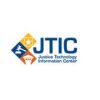By Becky Lewis
Tech Beat Magazine
It lines tunnels, bridge abutments, alley walls. It covers road signs and obscures vital information. It exposes small children to ugly words.
It is graffiti. And it isn’t art.
“Graffiti scares people. It doesn’t matter if it’s gang-related or not, it makes people feel unsafe,” says Lt. Lori Dreier of the St. Louis Park (Minn.) Police Department. “Our mayor, Jeff Jacobs, has said, ‘If you think this is art, then sign it and we’ll come talk to you.’”
But after a six-year eradication campaign, it might be hard to find graffiti in St. Louis Park, signed or unsigned. And what does appear quickly vanishes, thanks to what started as a grassroots campaign that has grown to a sophisticated cooperative effort between a number of Minneapolis suburbs and includes a reporting system, a searchable database and a website. Dreier says the basics of the campaign include rapid cleanup, tracking patterns related to where graffiti appears, and information sharing with St. Louis Park residents and neighboring communities. She characterizes the city’s Graffiti Reduction Initiative as a simple way to solve a problem by effectively using existing technology.
The effort started in 2007 due to an increasing number of reports from community members concerned about graffiti. At that time, incidents involving graffiti received the same code as other property damage, so there was no way to accurately determine the extent of the problem.
St. Louis Park PD started on the path to a solution by meeting with all the involved stakeholders, including the city’s Parks and Recreation and Public Works departments, and requesting their cooperation in a mandatory reporting effort. The department launched a public education campaign, asking community members to file reports and offering them help with cleanup. St. Louis Park PD also developed partnerships with the local railroad and utility companies to ensure those entities participated in the cleanup effort.
“Our Public Works department became chemists and found out the best ways to clean various surfaces, so they could in turn help out the homeowners,” Dreier says.
By the end of the first year, the city of 45,000 had documented 710 incidents of graffiti, some of them involving “art” that had existed for years. Six years later, the number of incidents reported annually has declined to around 150.
The campaign proved so effective that St. Louis Park decided to push it out it to the neighboring suburbs, spearheading the West Metro Graffiti Reduction campaign. That effort now encompasses the majority of Hennepin County, the largest county in the state, and covers nearly 100 square miles of suburban Minneapolis. Minneapolis and the Three Rivers Park District are participating in the West Metro group and are members of Graffitinet©.
With approximately a half-dozen communities involved in the West Metro effort, the group needed a more sophisticated tracking system than the Microsoft®Excel spreadsheet initially used in St. Louis Park. That led to the creation of a secure database and website called Graffitinet, and the communities involved shared the development costs via subscriptions of $500 each.
On Graffitinet, participating jurisdictions can post photos and define other characteristics to help track “taggers,” or graffiti painters, from one area to another. Rather than put in details about possible suspects, the agencies simply list “yes” or “no” under suspect, with a contact number, ensuring no private data could be found in the event the site is ever hacked. Officers who are looking for a certain “tag” can sign up to receive an email alert if a new entry includes that information. A tag is a mark, picture or nickname with which some graffiti painters sign their work. The database also includes location information using Google maps, as well as damage estimates if available.
“To date we estimate that the total cost of graffiti cleanup is $359,000 [West Metro Group] with our single biggest case totaling $15,000 and the person convicted continues to make restitution payments to the city. That includes more than $100,000 in 2007 alone,” Dreier says. “The cleanup costs have declined as the amount of graffiti has declined, and we’ve also begun covering some large or frequently vandalized targets with an anti-graffiti coating, so anything they use just wipes off. There’s an expectation that we don’t want to see this in St. Louis Park and the whole community is on board with that. One of our goals was sustainability, and we’ve achieved that. It’s just part of the culture now.”
She adds that the question she hears most when speaking about the effort is, “How did you get everyone involved? The answer is we had a core group dedicated to the graffiti fight and we all pledged to work together. The process could be used for any kind of problem. The problem might change, but the process would stay the same. As long as there is an initial commitment to it, you just let it flow from the top down and the problem takes care of itself.”
The St. Louis Park Graffiti Reduction Initiative, the subject of a presentation at the June 2013 National Institute of Justice (NIJ) Technology Institute for Law Enforcement, received a Community Policing Award from the International Association of Chiefs of Police in 2008 and a Hubert Humphrey Institute Award for Innovation in 2009. For more information, contact Lt. Lori Dreier at (952) 924-2131 or ldreier@stlouispark.org. For more information on the NIJ Technology Institutes, contact NIJ Senior Law Enforcement Program Manager Mike O’Shea at (202) 305-7954 or michael.oshea@usdoj.gov.


